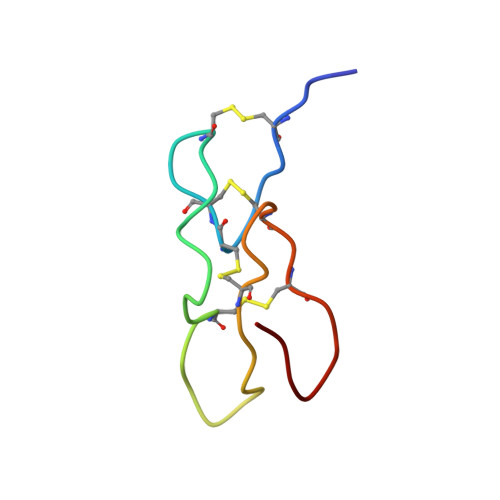NMR Structure and Dynamics of Recombinant Wild-Type and Mutated Jerdostatin, a Selective Inhibitor of Integrin Alpha1 Beta1
Carbajo, R.J., Sanz, L., Mosulen, S., Perez, A., Marcinkiewicz, C., Pineda-Lucena, A., Calvete, J.J.(2011) Proteins 79: 2530
- PubMed: 21656569
- DOI: https://doi.org/10.1002/prot.23076
- Primary Citation of Related Structures:
2W9O, 2W9U, 2W9V, 2W9W - PubMed Abstract:
NMR analysis of four recombinant jerdostatin molecules was assessed to define the structural basis of two naturally occurring gain-of-function events: C-terminal dipeptide processing and mutation of the active residue K21 to arginine. Removal of the highly mobile and a bulky C-terminal dipeptide produced pronounced chemical shift changes in the sequentially unconnected but spatially nearby α(1)β(1) inhibitory loop. Analysis of chemical shift divergence and (15)N backbone relaxation dynamics indicated differences in motions in the picosecond to nanosecond time scale, and the higher T(2) rate of S25, S26, and H27 of rJerK21 point to a slowdown in the microsecond to millisecond motions of these residues when compared with rJerR21. The evidence presented in this article converges on the hypothesis that dynamic differences between the α(1)β(1) recognition loops of rJerR21 and rJerK21 may influence the thermodynamics of their receptor recognition and binding. A decrease in the μs-ms time scale may impair the binding affinity by reducing the rate of possible conformations that the rJerK21 can adopt in this time scale.
Organizational Affiliation:
Department of Chemical Biology, Centro de Investigación Príncipe Felipe, Valencia, Spain. rcarbajo@cipf.es














